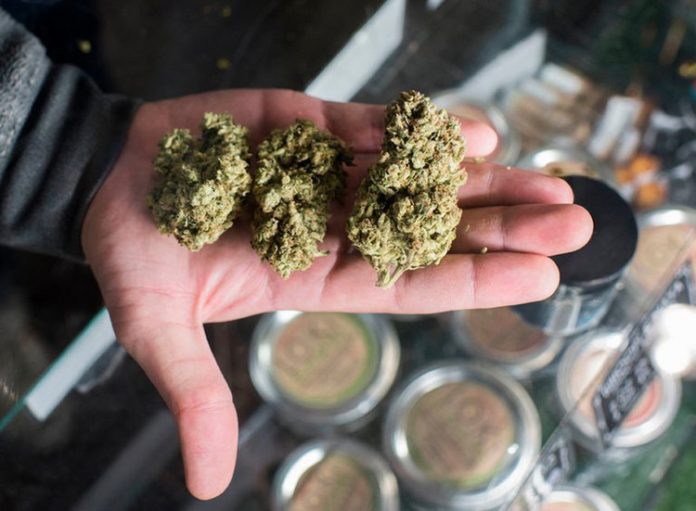There is a bottom line people lose sight of when discussing the opioid crisis sweeping the country: Millions of Americans experience chronic pain every day. They need help, and painkillers created using opioids are highly effective.
The problem, of course, is that they also are highly addictive.Since the number of deaths from painkiller overdose has swelled into tens of thousands each year, new regulations are in place to ensure doctors prescribe the most powerful painkillers only in limited cases.
Some versions have been banned in some states and at the federal level. Still, opioid-derived painkillers remain legal. Marijuana, which has led to zero overdose deaths, remains illegal at the federal level, even though some studies and many people say it helps them deal with pain.
Why?
While no one reason answers that question, two main areas control the status of prescription opioids and marijuana. One revolves around the medical benefits of both. The other, particularly for marijuana, involves a long history of politics and government machinations.
Opioids
Chronic pain is an issue millions deal with daily. Drug companies created synthetic painkillers to combat the issue. The include oxycodone, hydrocodone, codeine and morphine among many others, according to the National Institute on Drug Abuse.
They prove extremely effective when dealing with pain. They react with opioid receptors in the body and brain, lessening pain. However, they also provide a sense of euphoria and well-being, which leads to people taking more than they need.
However, it remains legal because it is an extremely effective pain reliever. Taken for a short period of time as prescribed by a doctor, painkilling drugs prove safe. However, as the Centers for Disease Control and Prevention (CDC) points out, the powerful euphoria can outweigh any advice from a doctor. Nearly half of the 33,000 opioid overdose deaths in the U.S. in 2015 involved prescription drugs, the CDC reports.
Part of the issue also is an active black market, where painkilling pills are available without a doctor’s prescription or the oversight of medical professionals.
A Civil War
In a way, it’s somewhat like alcohol. Small amounts, even daily, are not harmful and can even prove beneficial to health. However, about 88,000 alcohol-related deaths occur annually in the U.S., according to the National Institute on Alcohol Abuse, including almost 10,000 involving drunk driving.
Debate on the painkiller issue has led to debate among medical professionals. Some advocate eliminating opioid painkillers all together or putting strict restrictions on their use. In addition to addiction, they list other side effects, including depression, anxiety and a loss of sleep.
Others argue that the risks of opioids are not that much higher than other drugs. A Stanford University professor told PBS that 15,000 people die annually from anti-inflammatory medications such as ibuprofen. They argue for better education for patients on pain medication use.
New Book on Marijuana
The legalization of marijuana, on the other hand, has taken a completely different road.
It remains illegal at the federal level. That is primarily because the federal government does not recognized that it has any medical benefits. That makes it different than opioids (if not alcohol).
In her book on the War on the Drugs, British journalist Johann Hari provides a detailed account of how marijuana went from a plant prescribed and even used by doctors to becoming listed as one of the most dangerous drugs in the country.
How marijuana ended up listed as a Schedule I illegal drug by the federal government can be read here.
Hari goes back even further. Her investigation into marijuana found the big turning point came with a government bureaucrat in the 1930s who she claims wanted to keep the position he held during the Prohibition Era for alcohol.
Harry J. Anslinger became the first commissioner of the U.S. Treasury Department’s Federal Bureau of Narcotics. Hari argues that once prohibition against alcohol ended, Anslinger turned his attention to making marijuana illegal, despite his previous statements that marijuana caused no public health hazard.
He asked 30 medical professionals if marijuana should be illegal. Of them, 29 said no. Still, Anslinger pressed the case for making marijuana illegal by focusing on a Florida case where teenager Victor Licata killed his family with an axe. Anslinger claimed marijuana use led to the horrific murders.
Later investigations showed Licata did not use marijuana. Instead, he suffered from severe mental illness. However, the case provided the push Anslinger needed to get marijuana listed as an illegal drug. It’s been there ever since and was placed on the Schedule I of illegal drugs during the Nixon Administration.














